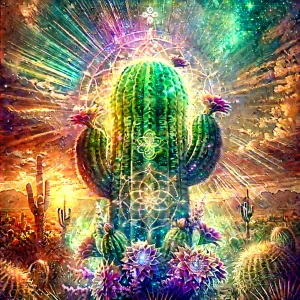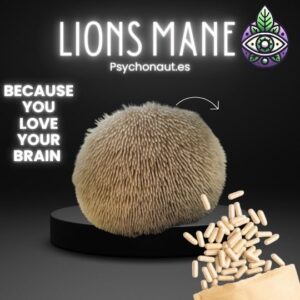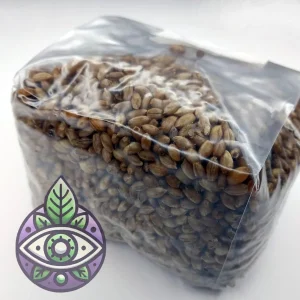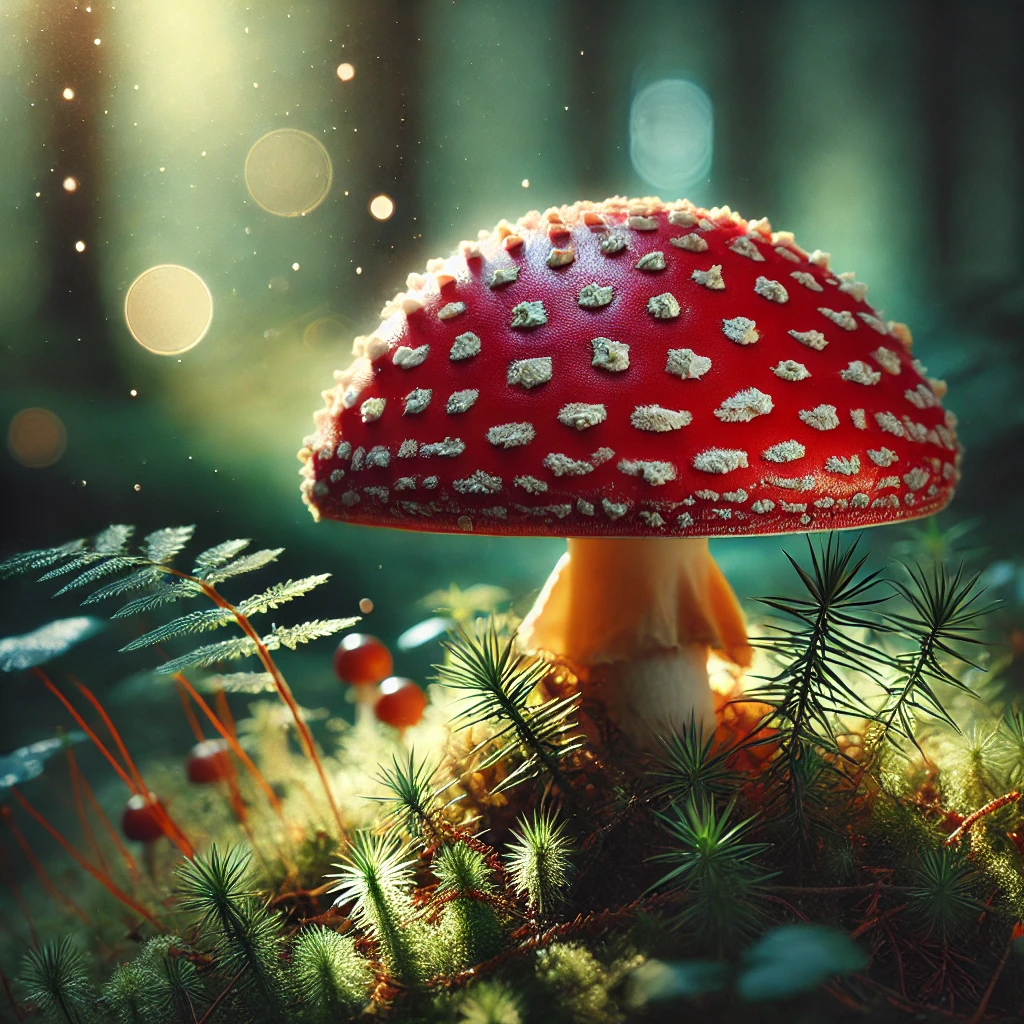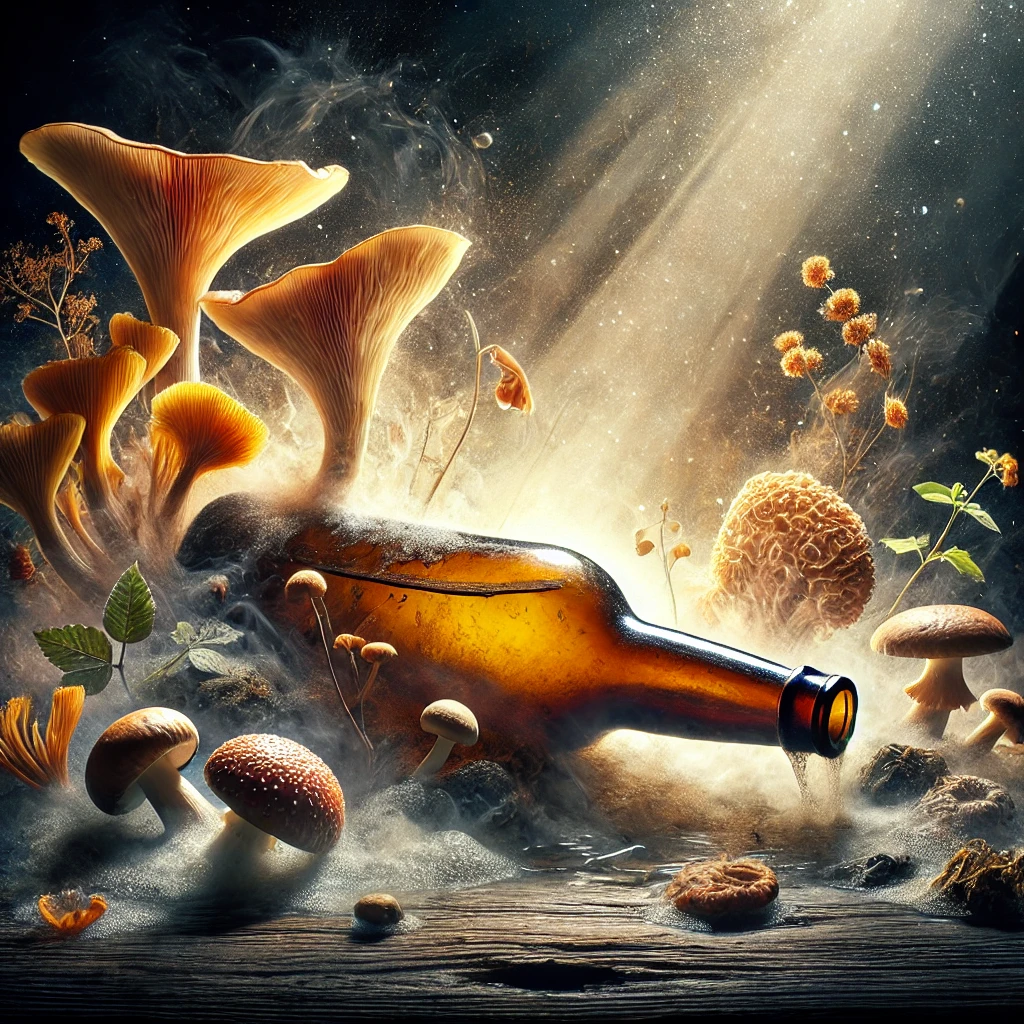San Pedro and peyote are two of the oldest and most sacred plants in the world of natural medicine and psychedelics. Both cactus species are known for their hallucinogenic properties and have been used in spiritual and shamanistic rituals for thousands of years. The San Pedro cactus (Echinopsis pachanoi) and the peyote cactus (Lophophora williamsii) contain the highly psychoactive alkaloid mescaline, which can induce intense visual and spiritual experiences.
In this detailed article, you will learn all about the history, uses, risks and scientific findings of San Pedro and peyote. You will learn about the cultural significance of these cacti for indigenous peoples, modern uses and the potential health benefits and risks. You will also gain a comprehensive insight into the legal aspects and advice on safe use.
At the end of the article, we’ll show you where you can find high-quality products if you’re interested in exploring these powerful cacti in a responsible way.
Chapter 1: What are San Pedro and peyote?
San Pedro (Echinopsis pachanoi)
San Pedro, scientifically known as Echinopsis pachanoi, is a columnar cactus native to the Andes of South America. It grows at altitudes of up to 3000 meters and is traditionally used in countries such as Peru, Bolivia and Ecuador. The cactus is known for its psychoactive properties, which are due to the active ingredient mescaline, which is also found in peyote.
San Pedro has a long history of spiritual and shamanistic use, especially in Andean cultures. It has been revered for more than 3000 years for its healing and mind-altering properties. The cactus plays a central role in the rituals of shamans and was traditionally used to heal illnesses, for spiritual guidance and to connect with the divine.
Peyote (Lophophora williamsii)
Peyote, scientifically known as Lophophora williamsii, is a small, round cactus native to the deserts of Mexico and South Texas. Like San Pedro, peyote also contains the alkaloid mescaline, which is known for its psychedelic effects. Peyote has an equally long history in the religious and healing rituals of the indigenous peoples of North America, particularly the Huichol, Tarahumara and Navajo.
The use of peyote is firmly rooted in the Native American Church, a religious movement that uses peyote as a sacrament in ceremonies to gain spiritual healing and insight.
Chapter 2: The history of San Pedro and Peyote
The history of the San Pedro cactus
The San Pedro cactus has been an important part of spiritual practices in the Andes for centuries. Archaeological findings indicate that San Pedro was already being used 3000 years ago in the ancient cultures of Peru. One of the oldest depictions of the cactus can be found in the Chavín culture, which flourished between 1200 and 200 BC. Images of the San Pedro cactus have been found in the Chavín de Huantar temple complex, one of the most important religious sites in the Andes, indicating its religious and healing significance.
The shamans of the Andes used the cactus in healing rituals and for spiritual guidance. They believed that San Pedro could help them to connect with the gods and nature. The name “San Pedro” (Saint Peter) dates back to the time of Spanish colonization, when Christian missionaries tried to suppress indigenous spirituality. The cactus was named after St. Peter, who holds the key to the kingdom of heaven, which is seen as an allusion to the cactus’ ability to open spiritual doors.
The history of the peyote cactus
Peyote has been a sacred cactus for the indigenous peoples of northern Mexico and the southern USA for thousands of years. Archaeologists have found peyote buds that are up to 5000 years old. Historically, peyote was used by the Huichol, Cora, Tarahumara and Navajo for spiritual rituals that often involved hours of chanting, dancing and meditation.
The Native American Church, a religious organization that uses peyote ceremonies as a central part of its spirituality, was founded in the late 19th century. Today, peyote is legal in the US for Native American Church religious ceremonies and plays an important role in spiritual healing and community life.
Chapter 3: Active ingredients and psychedelic effects of San Pedro and peyote
Both cacti, San Pedro and Peyote, contain the alkaloid mescaline, which is responsible for the psychoactive effects. Mescaline is one of the classic psychedelics, which also include LSD, psilocybin (in magic mushrooms) and DMT. Psychedelic substances influence the serotonin system in the brain, in particular the 5-HT2A receptors, which are responsible for processing emotions, moods and perception.
Effect of mescaline
Taking mescaline from San Pedro or peyote usually results in an intense but slow psychedelic experience that can last between 8 and 14 hours. Typical effects include:
- Increased visual perception: colors appear more intense, patterns can appear visually “wavy”.
- Emotional openness: Many users report emotional healing and a deeper understanding of their feelings.
- Connection to nature: A common theme when taking mescaline is the feeling of experiencing a deep spiritual connection to nature.
- Self-reflection and insight: Mescaline is often used as a tool for self-reflection, helping people to face their fears, traumas and life choices.
Chapter 4: Modern use of San Pedro and peyote
Spiritual and shamanic rituals
Both San Pedro and peyote are still used in traditional rituals. Especially in a shamanic context, they play a central role in the healing of physical and mental ailments. In the Andes, San Pedro is often used in night ceremonies where the shaman leads the group through songs, meditation and symbolic rituals to facilitate deep inner healing.
The cactus also plays a central role in the peyote ceremonies of the Native American Church. During the ceremony, which often lasts all night, the participants pray and meditate, accompanied by drumming and singing. Peyote is considered a sacred sacrament that helps believers to connect with their spiritual roots and the gods.
Therapeutic use
In recent years, there has been a surge of interest in the therapeutic use of psychedelics, and mescaline plays an important role in this. There is growing scientific evidence that mescaline, as well as other psychedelics, may be able to help people with mental illnesses, including:
- Depression
- States of anxiety
- Post-traumatic stress disorder (PTSD)
- Addiction problems
In modern psychedelic therapy approaches, mescaline is used in controlled, therapeutic settings, often accompanied by an experienced therapist or shaman. Studies show that people who participate in such sessions often report significant improvements in their mental health and emotional stability.
Chapter 5: Risks and side effects
Although the effects of San Pedro and peyote may seem tempting at first glance, there are also risks and side effects that should be taken into account .
Physical risks
The most common physical side effects of mescaline include
- Nausea and vomiting: Especially at the beginning of the experience, many people experience stomach upset and nausea. In traditional rituals, this aspect is often seen as “cleansing”, both on a physical and spiritual level.
- Headaches: Some users report headaches during or after the mescaline experience.
- Increased heart rate and blood pressure: Mescaline can increase heart rate and blood pressure, which can be risky for people with heart problems.
Psychological risks
As mescaline is a powerful psychedelic substance, there is a risk that the experience can be overwhelming for some people. This is especially true for people who already suffer from mental illnesses such as schizophrenia or severe anxiety disorders.
It is important to note that psychedelic substances such as mescaline should be taken in controlled, safe environments, ideally under the supervision of an experienced shaman or therapist.
Dependence and tolerance development
Mescaline has a low addictive potential and there is no evidence that it can lead to physical dependence. However, tolerance develops quickly, so that successive intakes lead to a reduced effect within a short period of time.
Chapter 6: Scientific studies on San Pedro, peyote and mescaline
Neuroscientific findings
Research into psychedelic substances has increased significantly in recent years, and mescaline is now being investigated as a promising tool for treating mental illness. Neuroscience studies show that mescaline promotes neuroplasticity – the brain’s ability to create new neural connections. This could explain why people who take mescaline often report long-term positive changes in their mood and behavior.
A study published in the Journal of Psychopharmacology showed that people who took mescaline in a therapeutic context experienced a significant reduction in anxiety and depression, often over several months.
Chapter 7: Legality of San Pedro and Peyote
The legal situation of San Pedro and peyote varies around the world. In many countries, the cultivation and use of peyote is strictly regulated or even prohibited, while San Pedro is legally sold as an ornamental plant in some countries.
In the USA, peyote is legal for members of the Native American Church for religious ceremonies, while it is illegal for general use. In other countries, such as Germany and Switzerland, both San Pedro and peyote are classified as narcotics in many cases.
It is important to find out about the legal situation in your country before buying or using cacti containing mescaline.
Chapter 8: Where to buy San Pedro and peyote
If you’re interested in exploring San Pedro or peyote, it’s important to buy products from reliable sources that are ethically sourced and of high quality. In our store we offer a selection of San Pedro and peyote products that have been carefully selected to provide you with a safe and authentic experience.
Our products come from ethically responsible sources and are manufactured in accordance with the highest quality standards.
Conclusion: The spiritual and therapeutic power of San Pedro and peyote
San Pedro and peyote are more than just psychoactive cacti. They are a window to spiritual worlds that are deeply connected to nature and our inner worlds. Whether as a tool for self-reflection, spiritual healing or the treatment of mental illness, mescaline from these sacred plants has the potential to profoundly impact our lives.
If you are interested in exploring these cacti in a responsible way, we recommend you check out the high-quality products in our store to discover them.

